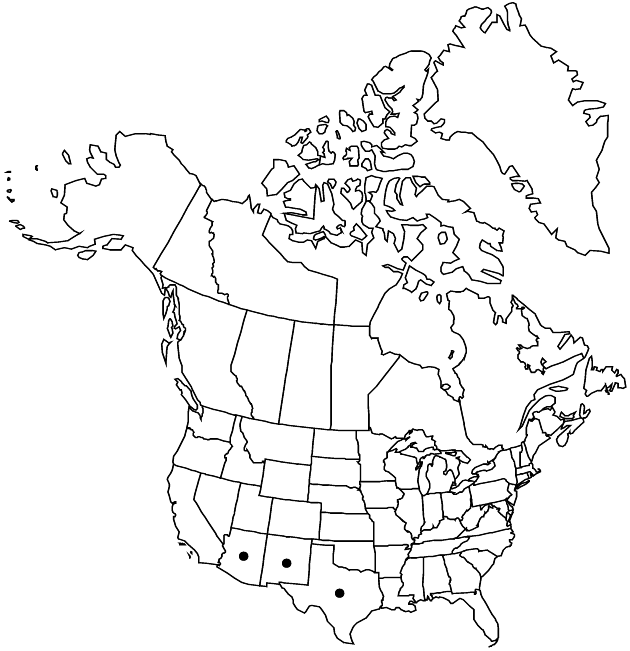Laënnecia sophiifolia
Phytologia 68: 225. 1990.
Annuals, 10–50(–150+) cm (sometimes branched from bases). Leaf blades: bases obscurely, if at all, clasping, faces sparsely hirtellous to villous (at least on margins, hairs multicellular) and stipitate- to sessile-glandular; proximal ovate to spatulate, 20–50+ × 10–20+ mm, mostly 1–2-pinnately lobed (lobes oblong-linear to filiform); distal similar, pinnately lobed or entire (then linear to filiform). Heads in racemiform or paniculiform arrays (on main and lateral stems). Involucres 2.5–3.5 mm. Receptacles 1.5–2 mm diam. Pistillate florets 20–40+; corollas: lengths ± 1/2 styles, laminae 0. Disc florets 2–6. Cypselae pale pinkish tan, 0.6–0.8 mm, glabrous or sparsely strigillose (hairs 0.05–0.1 mm), sometimes glandular near apices; pappi fragile or readily falling, of 9–12(–20) white to tawny bristles in 1 series, 2–3 mm. 2n = 18.
Phenology: Flowering late summer–early fall.
Habitat: Disturbed sites, among igneous rocks
Elevation: 1300–2100 m
Distribution

Ariz., N.Mex., Tex., Mexico.
Discussion
Selected References
None.